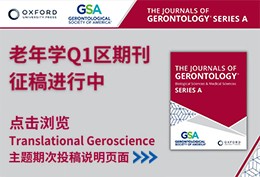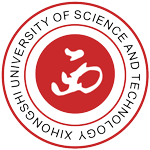-
Biological responses to immobilized microscale and nanoscale surface topographies Pharmacol. Therapeut. (IF 12.5) Pub Date : 2017-07-16
Shelby A. Skoog, Girish Kumar, Roger J. Narayan, Peter L. GoeringCellular responses are highly influenced by biochemical and biomechanical interactions with the extracellular matrix (ECM). Due to the impact of ECM architecture on cellular responses, significant research has been dedicated towards developing biomaterials that mimic the physiological environment for design of improved medical devices and tissue engineering scaffolds. Surface topographies with microscale
-
Cardiac metabolism — A promising therapeutic target for heart failure Pharmacol. Therapeut. (IF 12.5) Pub Date : 2017-08-15
Hannah Noordali, Brodie L. Loudon, Michael P. Frenneaux, Melanie MadhaniBoth heart failure with reduced ejection fraction (HFrEF) and with preserved ejection fraction (HFpEF) are associated with high morbidity and mortality. Although many established pharmacological interventions exist for HFrEF, hospitalization and death rates remain high, and for those with HFpEF (approximately half of all heart failure patients), there are no effective therapies. Recently, the role
-
The potential for targeted rewriting of epigenetic marks in COPD as a new therapeutic approach Pharmacol. Therapeut. (IF 12.5) Pub Date : 2017-08-19
Dan-Dan Wu, Juan Song, Sabine Bartel, Susanne Krauss-Etschmann, Marianne G. Rots, Machteld N. HylkemaChronic obstructive pulmonary disease (COPD) is an age and smoking related progressive, pulmonary disorder presenting with poorly reversible airflow limitation as a result of chronic bronchitis and emphysema. The prevalence, disease burden for the individual, and mortality of COPD continues to increase, whereas no effective treatment strategies are available. For many years now, a combination of bronchodilators
-
Molecular pathogenesis and therapeutic implications in pediatric high-grade gliomas Pharmacol. Therapeut. (IF 12.5) Pub Date : 2017-08-19
Tareq A. Juratli, Nan Qin, Daniel P. Cahill, Mariella G. FilbinHigh-grade gliomas (HGG) are the most common malignant brain tumors in the pediatric population and account for a large subset of all pediatric central nervous system neoplasms. The management of pediatric HGG continues to be challenging, with poor outcome in many cases despite aggressive treatments. Consequently, parallel research efforts have been focused on identifying the underlying genetic and
-
Binge-eating disorder: Clinical and therapeutic advances Pharmacol. Therapeut. (IF 12.5) Pub Date : 2017-08-19
Peter H. Hutson, Iris M. Balodis, Marc N. PotenzaBinge-eating disorder (BED) is the most prevalent eating disorder with estimates of 2–5% of the general adult population. Nonetheless, its pathophysiology is poorly understood. Furthermore, there exist few therapeutic options for its effective treatment. Here we review the current state of binge-eating neurobiology and pharmacology, drawing from clinical therapeutic, neuroimaging, cognitive, human
-
The role of the leukemia inhibitory factor receptor in neuroprotective signaling Pharmacol. Therapeut. (IF 12.5) Pub Date : 2017-08-19
Stephanie M. Davis, Keith R. PennypackerSeveral neurotropic cytokines relay their signaling through the leukemia inhibitory factor receptor. This 190 kDa subunit couples with the 130 kDa gp130 subunit to transduce intracellular signaling in neurons and oligodendrocytes that leads to expression of genes associated with neurosurvival. Moreover, activation of this receptor alters the phenotype of immune cells to an anti-inflammatory one. Although
-
T cell engaging bispecific antibody (T-BsAb): From technology to therapeutics Pharmacol. Therapeut. (IF 12.5) Pub Date : 2017-08-20
Z. Wu, N.V. CheungHarnessing the power of the human immune system to treat cancer is the essence of immunotherapy. Monoclonal antibodies engage the innate immune system to destroy targeted cells. For the last 30 years, antibody-dependent cell-mediated cytotoxicity and complement-dependent cytotoxicity have been the main mechanisms of anti-tumor action of unconjugated antibody drugs. Efforts to exploit the potentials
-
EMT: Mechanisms and therapeutic implications Pharmacol. Therapeut. (IF 12.5) Pub Date : 2017-08-20
Mohini Singh, Nicolas Yelle, Chitra Venugopal, Sheila K. SinghMetastasis, the dissemination of cancer cells from primary tumors, represents a major hurdle in the treatment of cancer. The epithelial-mesenchymal transition (EMT) has been studied in normal mammalian development for decades, and it has been proposed as a critical mechanism during cancer progression and metastasis. EMT is tightly regulated by several internal and external cues that orchestrate the
-
Pharmacotherapeutic potential of ginger and its compounds in age-related neurological disorders Pharmacol. Therapeut. (IF 12.5) Pub Date : 2017-08-24
Jin Gyu Choi, Sun Yeou Kim, Minsun Jeong, Myung Sook OhAge-related neurological disorders (ANDs), including neurodegenerative diseases, are multifactorial disorders with a risk that increases with aging. ANDs are generally characterized by common neuropathological conditions of the central nervous system, such as oxidative stress, neuroinflammation, and protein misfolding. Recently, efforts have been made to overcome ANDs because of the increase in age-dependent
-
Cannabis use during pregnancy: Pharmacokinetics and effects on child development Pharmacol. Therapeut. (IF 12.5) Pub Date : 2017-08-25
Kimberly S. Grant, Rebekah Petroff, Nina Isoherranen, Nephi Stella, Thomas M. BurbacherThe broad-based legalization of cannabis use has created a strong need to understand its impact on human health and behavior. The risks that may be associated with cannabis use, particularly for sensitive subgroups such as pregnant women, are difficult to define because of a paucity of dose-response data and the recent increase in cannabis potency. Although there is a large body of evidence detailing
-
Non-canonical function of Tat in regulating host microtubule dynamics: Implications for the pathogenesis of lentiviral infections Pharmacol. Therapeut. (IF 12.5) Pub Date : 2017-08-25
Min Liu, Xin Du, Jun ZhouLentiviruses are a class of genetically unique retroviruses that share similar features, despite their wide variety of host species. Transactivator of transcription (Tat) proteins of lentiviruses are critical for the regulation of viral transcription and replication. Recent studies demonstrate that in addition to mediating transactivation, Tat binds to the microtubule cytoskeleton of the host cell
-
The role of osteoprotegerin in the crosstalk between vessels and bone: Its potential utility as a marker of cardiometabolic diseases Pharmacol. Therapeut. (IF 12.5) Pub Date : 2017-09-01
Luc Rochette, Alexandre Meloux, Eve Rigal, Marianne Zeller, Yves Cottin, Catherine VergelyAmong the numerous molecules that are being studied for their potential utility as biomarkers of cardiovascular diseases, much interest has been shown in the superfamily of tumor necrosis factor (TNF) receptors. Members of this family include osteoprotegerin (OPG) and its ligands, which are receptor activators of nuclear factor κB ligand (RANKL) and TNF-related apoptosis-inducing ligand (TRAIL). These
-
Bevacizumab-induced hypertension: Clinical presentation and molecular understanding Pharmacol. Therapeut. (IF 12.5) Pub Date : 2017-09-04
Megan Li, Deanna L. KroetzBevacizumab is a vascular endothelial growth factor-A-specific angiogenesis inhibitor indicated as an adjunct to chemotherapy for the treatment of several types of cancer. Hypertension is commonly observed during bevacizumab treatment, and high-grade toxicity can limit therapy and lead to other cardiovascular complications. The factors that contribute to interindividual variability in blood pressure
-
Immunoproteasome-selective and non-selective inhibitors: A promising approach for the treatment of multiple myeloma Pharmacol. Therapeut. (IF 12.5) Pub Date : 2017-09-11
Roberta Ettari, Maria Zappalà, Silvana Grasso, Caterina Musolino, Vanessa Innao, Alessandro AllegraThe ubiquitin-proteasome system (UPS) is the major non-lysosomal proteolytic system for the degradation of abnormal or damaged proteins no longer required. The proteasome is involved in degradation of numerous proteins which regulate the cell cycle, indicating a role in controlling cell proliferation and maintaining cell survival. Defects in the UPS can lead to anarchic cell proliferation and to tumor
-
Paving the Rho in cancer metastasis: Rho GTPases and beyond Pharmacol. Therapeut. (IF 12.5) Pub Date : 2017-09-11
Sepp Jansen, Reinoud Gosens, Thomas Wieland, Martina SchmidtMalignant carcinomas are often characterized by metastasis, the movement of carcinoma cells from a primary site to colonize distant organs. For metastasis to occur, carcinoma cells first must adopt a pro-migratory phenotype and move through the surrounding stroma towards a blood or lymphatic vessel. Currently, there are very limited possibilities to target these processes therapeutically.The family
-
Oxidative stress and cellular pathways of asthma and inflammation: Therapeutic strategies and pharmacological targets Pharmacol. Therapeut. (IF 12.5) Pub Date : 2017-08-23
Vikas Mishra, Jaspreet Banga, Patricia SilveyraAsthma is a complex inflammatory disease characterized by airway inflammation and hyperresponsiveness. The mechanisms associated with the development and progression of asthma have been widely studied in multiple populations and animal models, and these have revealed involvement of various cell types and activation of intracellular signaling pathways that result in activation of inflammatory genes
-
Members of FOX family could be drug targets of cancers Pharmacol. Therapeut. (IF 12.5) Pub Date : 2017-08-19
Jinhua Wang, Wan Li, Ying Zhao, De Kang, Weiqi Fu, Xiangjin Zheng, Xiaocong Pang, Guanhua DuFOX families play important roles in biological processes, including metabolism, development, differentiation, proliferation, apoptosis, migration, invasion and longevity. Here we are focusing on roles of FOX members in cancers, FOX members and drug resistance, FOX members and stem cells. Finally, FOX members as drug targets of cancer treatment were discussed. Future perspectives of FOXC1 research
-
Endothelial and cardiac progenitor cells for cardiovascular repair: A controversial paradigm in cell therapy Pharmacol. Therapeut. (IF 12.5) Pub Date : 2017-08-19
Vanessa Bianconi, Amirhossein Sahebkar, Petri Kovanen, Francesco Bagaglia, Biagio Ricciuti, Paolo Calabrò, Giuseppe Patti, Matteo PirroStem cells have the potential to differentiate into cardiovascular cell lineages and to stimulate tissue regeneration in a paracrine/autocrine manner; thus, they have been extensively studied as candidate cell sources for cardiovascular regeneration. Several preclinical and clinical studies addressing the therapeutic potential of endothelial progenitor cells (EPCs) and cardiac progenitor cells (CPCs)
-
Emerging understanding of the mechanism of action of Bronchial Thermoplasty in asthma Pharmacol. Therapeut. (IF 12.5) Pub Date : 2017-07-27
J.N.S. d'Hooghe, N.H.T. ten Hacken, E.J.M. Weersink, P.J. Sterk, J.T. Annema, P.I. BontaBronchial Thermoplasty (BT) is an endoscopic treatment for moderate-to-severe asthma patients who are uncontrolled despite optimal medical therapy. Effectiveness of BT has been demonstrated in several randomized clinical trials. However, the asthma phenotype that benefits most of this treatment is unclear, partly because the mechanism of action is incompletely understood. BT was designed to reduce
-
Antibody drug conjugates for treatment of breast cancer: Novel targets and diverse approaches in ADC design Pharmacol. Therapeut. (IF 12.5) Pub Date : 2017-07-27
Pamela A. Trail, Gene M. Dubowchik, Timothy B. LowingerBreast cancer is a heterogeneous group of malignancies with a spectrum of molecular subtypes, pathologies and outcomes that together comprise the most common non-cutaneous cancer in women. Currently, over 80% of breast cancer patients are diagnosed at relatively early stages of disease where there are encouraging data on outcomes and long term survival. However, there is currently no curative option
-
The central serotonin2B receptor as a new pharmacological target for the treatment of dopamine-related neuropsychiatric disorders: Rationale and current status of research Pharmacol. Therapeut. (IF 12.5) Pub Date : 2017-07-27
Céline Devroye, Adeline Cathala, Pier Vincenzo Piazza, Umberto SpampinatoThe serotonin2B receptor (5-HT2BR), which was first cloned and characterized in the rat stomach fundus, is the most recent addition to the 5-HT2R family. While its involvement in the regulation of gastrointestinal, vascular, pulmonary and cardiac physiology has been widely investigated, its functional role within the central nervous system (CNS) has received much less attention. Nevertheless, when
-
Polymyxins for CNS infections: Pharmacology and neurotoxicity Pharmacol. Therapeut. (IF 12.5) Pub Date : 2017-07-25
Tony Velkov, Chongshan Dai, Giuseppe D. Ciccotosto, Roberto Cappai, Daniel Hoyer, Jian LiCentral nervous system (CNS) infections caused by multi-drug resistant (MDR) Gram-negative bacteria present a major health and economic burden worldwide. Due to the nearly empty antibiotic discovery pipeline, polymyxins (i.e. polymyxin B and colistin) are used as the last-line therapy against Gram-negative ‘superbugs’ when all other treatment modalities have failed. The treatment of CNS infections
-
Multifunctional molecule ERp57: From cancer to neurodegenerative diseases Pharmacol. Therapeut. (IF 12.5) Pub Date : 2017-07-16
Aubryanna Hettinghouse, Ronghan Liu, Chuan-ju LiuThe protein disulfide isomerase (PDI) gene family is a protein family classically characterized by endoplasmic reticulum (ER) localization and isomerase and redox activity. ERp57, a prominent multifunctional member of the PDI family, is detected at various levels in multiple cellular localizations outside of the ER. ERp57 has been functionally linked to a host of physiological processes and numerous
-
Unravelling the pharmacologic opportunities and future directions for targeted therapies in gastro-intestinal cancers part 2: Neuroendocrine tumours, hepatocellular carcinoma, and gastro-intestinal stromal tumours☆ Pharmacol. Therapeut. (IF 12.5) Pub Date : 2017-07-16
Cindy Neuzillet, Louis de Mestier, Benoît Rousseau, Olivier Mir, Mohamed Hebbar, Hemant M. Kocher, Philippe Ruszniewski, Christophe TournigandUntil the 1990s, cytotoxic chemotherapy has been the cornerstone of medical therapy for gastrointestinal (GI) cancers. Better understanding of the cancer cell molecular biology has led to the therapeutic revolution of targeted therapies, i.e. monoclonal antibodies or small molecule inhibitors directed against proteins that are specifically overexpressed or mutated in cancer cells. These agents, being
-
The challenges and promise of targeting the Liver X Receptors for treatment of inflammatory disease Pharmacol. Therapeut. (IF 12.5) Pub Date : 2017-07-16
Michael B. FesslerThe Liver X Receptors (LXRs) are oxysterol-activated transcription factors that upregulate a suite of genes that together promote coordinated mobilization of excess cholesterol from cells and from the body. The LXRs, like other nuclear receptors, are anti-inflammatory, inhibiting signal-dependent induction of pro-inflammatory genes by nuclear factor-κB, activating protein-1, and other transcription
-
Stable isotope-based flux studies in nonalcoholic fatty liver disease Pharmacol. Therapeut. (IF 12.5) Pub Date : 2017-07-16
Arthur McCullough, Stephen Previs, Takhar KasumovNonalcoholic fatty liver disease (NAFLD) is the most common chronic liver disease and is associated with the worldwide epidemics of obesity, diabetes and cardiovascular diseases. NAFLD ranges from benign fat accumulation in the liver (steatosis) to non-alcoholic steatohepatitis (NASH), and cirrhosis which can progress to hepatocellular carcinoma and liver failure. Mass spectrometry and magnetic resonance
-
Pharmacology of human trace amine-associated receptors: Therapeutic opportunities and challenges☆ Pharmacol. Therapeut. (IF 12.5) Pub Date : 2017-07-16
Mark D. Berry, Raul R. Gainetdinov, Marius C. Hoener, Mohammed ShahidThe discovery in 2001 of a G protein-coupled receptor family, subsequently termed trace amine-associated receptors (TAAR), triggered a resurgence of interest in so-called trace amines. Initial optimism quickly faded, however, as the TAAR family presented a series of challenges preventing the use of standard medicinal chemistry and pharmacology technologies. Consequently the development of basic tools
-
Omega-3 polyunsaturated fatty acids as a treatment strategy for nonalcoholic fatty liver disease Pharmacol. Therapeut. (IF 12.5) Pub Date : 2017-07-16
Donald B. Jump, Kelli A. Lytle, Christopher M. Depner, Sasmita TripathyObese and type 2 diabetic (T2DM) patients have a high prevalence of nonalcoholic fatty liver disease (NAFLD). NAFLD is a continuum of chronic liver diseases ranging from benign hepatosteatosis to nonalcoholic steatohepatitis (NASH), cirrhosis and primary hepatocellular cancer (HCC). Because of its strong association with the obesity epidemic, NAFLD is rapidly becoming a major public health concern
-
Oncogenic pathways that affect antitumor immune response and immune checkpoint blockade therapy Pharmacol. Therapeut. (IF 12.5) Pub Date : 2017-07-15
Xianda Zhao, Subbaya SubramanianMechanistic insights of cancer immunology have led to the development of immune checkpoint blockade therapy (ICBT), which has elicited a remarkable clinical response in some cancer patients. Increasing evidence suggests that activation of oncogenic pathways, such as RAS/RAF/MAPK and PI3K signaling, impairs the antitumor immune response. Such oncogenic signaling, in turn, activates many inhibitory factors
-
Significance of A-to-I RNA editing of transcripts modulating pharmacokinetics and pharmacodynamics Pharmacol. Therapeut. (IF 12.5) Pub Date : 2017-07-15
Masataka Nakano, Miki NakajimaRNA editing is a post-transcriptional process that alters the nucleotide sequence of RNA transcripts to generate transcriptome diversity. Among the various types of RNA editing, adenosine-to-inosine (A-to-I) RNA editing is the most frequent type of RNA editing in mammals. Adenosine deaminases acting on RNA (ADAR) enzymes, ADAR1 and ADAR2, convert adenosines in double-stranded RNA structures into inosines
-
Inhibitors of connexin and pannexin channels as potential therapeutics Pharmacol. Therapeut. (IF 12.5) Pub Date : 2017-07-15
Joost Willebrords, Michaël Maes, Sara Crespo Yanguas, Mathieu VinkenWhile gap junctions support the exchange of a number of molecules between neighboring cells, connexin hemichannels provide communication between the cytosol and the extracellular environment of an individual cell. The latter equally holds true for channels composed of pannexin proteins, which display an architecture reminiscent of connexin hemichannels. In physiological conditions, gap junctions are
-
Toxicity profiles of immunotherapy☆ Pharmacol. Therapeut. (IF 12.5) Pub Date : 2017-07-15
S. Cousin, J. Seneschal, A. ItalianoImmunotherapies are changing the landscape of advanced solid tumor treatment. These therapies have different mechanisms of action and include oncolytic viruses, checkpoint inhibitors, such as CTLA-4 or PD1/PD-L1 monoclonal antibodies, and CSF-1R antibodies. Given the growing therapeutic impact of these agents in oncology, it is important to better understand their properties. Immunotherapies generate
-
Purinergic P2Y receptors: Molecular diversity and implications for treatment of cardiovascular diseases Pharmacol. Therapeut. (IF 12.5) Pub Date : 2017-06-23
Akiyuki Nishimura, Caroline Sunggip, Sayaka Oda, Takuro Numaga-Tomita, Makoto Tsuda, Motohiro NishidaPurinergic signaling, mediated mainly by G protein-coupled P2Y receptors (P2YRs), is now attracting attention as a new therapeutic target for preventing or treating cardiovascular diseases. Observations using mice with genetically modified P2YRs and/or treated with a pharmacological P2YR inhibitor have helped us understand the physiological and pathological significance of P2YRs in the cardiovascular
-
Novel pharmacotherapies for cardiac amyloidosis☆ Pharmacol. Therapeut. (IF 12.5) Pub Date : 2017-06-22
Kevin M. Alexander, Avinainder Singh, Rodney H. FalkAmyloidosis refers to a range of protein misfolding disorders that can cause organ dysfunction through progressive fibril deposition. Cardiac involvement often leads to significant morbidity and mortality and increasingly has been recognized as an important cause of heart failure. The two main forms of cardiac amyloidosis, light chain (AL) and transthyretin (ATTR) amyloidosis, have distinct mechanisms
-
Glucagon-like peptide 1: A potential anti-inflammatory pathway in obesity-related asthma Pharmacol. Therapeut. (IF 12.5) Pub Date : 2017-06-22
Dan-Vinh Nguyen, Angela Linderholm, Angela Haczku, Nicholas KenyonAlterations in arginine metabolism and accelerated formation of advanced glycation end-products (AGEs), crucial mechanisms in obesity-related asthma, can be modulated by glucagon-like peptide 1 (GLP-1). l-arginine dysregulation in obesity promotes inflammation and bronchoconstriction. Prolonged hyperglycemia, dyslipidemia, and oxidative stress leads to production of AGEs, that bind to their receptor
-
Anti-TNFα therapy in inflammatory lung diseases Pharmacol. Therapeut. (IF 12.5) Pub Date : 2017-06-19
Rama Malaviya, Jeffrey D. Laskin, Debra L. LaskinIncreased levels of tumor necrosis factor (TNF) α have been linked to a number of pulmonary inflammatory diseases including asthma, chronic obstructive pulmonary disease (COPD), acute lung injury (ALI)/acute respiratory distress syndrome (ARDS), sarcoidosis, and interstitial pulmonary fibrosis (IPF). TNFα plays multiple roles in disease pathology by inducing an accumulation of inflammatory cells, stimulating
-
Contrast-induced nephropathy: Basic concepts, pathophysiological implications and prevention strategies☆ Pharmacol. Therapeut. (IF 12.5) Pub Date : 2017-06-19
Charalampos Mamoulakis, Konstantinos Tsarouhas, Irini Fragkiadoulaki, Ioannis Heretis, Martin F. Wilks, Demetrios A. Spandidos, Christina Tsitsimpikou, Aristides TsatsakisContrast-induced nephropathy (CIN) is reversible acute renal failure observed following administration of iodinated contrast media (CM) during angiographic or other medical procedures such as urography. There are various mechanisms through which CM develop their nephrotoxic effects, including oxidative stress and apoptosis. CIN is a real-life, albeit not very rare, entity. Exact pathophysiology remains
-
Targeting inflammation for the treatment of alcoholic liver disease☆☆☆★★ Pharmacol. Therapeut. (IF 12.5) Pub Date : 2017-06-19
Ming-Jiang Xu, Zhou Zhou, Richard Parker, Bin GaoAlcoholic liver disease (ALD) is a leading cause of chronic liver disease with a wide spectrum of manifestations including simple steatosis to steatohepatitis, cirrhosis, and hepatocellular carcinoma. Liver injury in ALD is caused by chronic inflammation, which has been actively investigated as a therapeutic target for the treatment of ALD for over the last four decades. In this review, we summarize
-
Soluble epoxide hydrolase as a therapeutic target for pain, inflammatory and neurodegenerative diseases☆ Pharmacol. Therapeut. (IF 12.5) Pub Date : 2017-06-19
Karen M. Wagner, Cindy B. McReynolds, William K. Schmidt, Bruce D. HammockEicosanoids are biologically active lipid signaling molecules derived from polyunsaturated fatty acids. Many of the actions of eicosanoid metabolites formed by cyclooxygenase and lipoxygenase enzymes have been characterized, however, the epoxy-fatty acids (EpFAs) formed by cytochrome P450 enzymes are newly described by comparison. The EpFA metabolites modulate a diverse set of physiologic functions
-
Analysis of natural product regulation of cannabinoid receptors in the treatment of human disease☆ Pharmacol. Therapeut. (IF 12.5) Pub Date : 2017-06-03
S. Badal, K.N. Smith, R. RajnarayananThe organized, tightly regulated signaling relays engaged by the cannabinoid receptors (CBs) and their ligands, G proteins and other effectors, together constitute the endocannabinoid system (ECS). This system governs many biological functions including cell proliferation, regulation of ion transport and neuronal messaging. This review will firstly examine the physiology of the ECS, briefly discussing
-
MicroRNA and chronic pain: From mechanisms to therapeutic potential Pharmacol. Therapeut. (IF 12.5) Pub Date : 2017-06-01
María José López-González, Marc Landry, Alexandre FavereauxChronic pain is a major public health issue with an incidence of 20–25% worldwide that can take different forms like neuropathic, cancer-related or inflammatory pain. Chronic pain often limits patients in their daily activities leading to despair. Thus, the goal of treatments is to relieve pain sufficiently to enable patients to go back to a normal life. Unfortunately, few patients with chronic pain
-
Targeting cysteine proteases in trypanosomatid disease drug discovery Pharmacol. Therapeut. (IF 12.5) Pub Date : 2017-06-01
Leonardo G. Ferreira, Adriano D. AndricopuloChagas disease and human African trypanosomiasis are endemic conditions in Latin America and Africa, respectively, for which no effective and safe therapy is available. Efforts in drug discovery have focused on several enzymes from these protozoans, among which cysteine proteases have been validated as molecular targets for pharmacological intervention. These enzymes are expressed during the entire
-
Treatment advances in small cell lung cancer (SCLC) Pharmacol. Therapeut. (IF 12.5) Pub Date : 2017-06-01
Saiama N. Waqar, Daniel MorgenszternSmall cell lung cancer (SCLC) is an aggressive tumor characterized by rapid doubling time and high propensity for early development of disseminated disease. Although most patients respond to initial therapy with a platinum doublet, the majority of those with limited stage and virtually all patients with metastatic disease eventually develop tumor progression for which there are limited treatment options
-
Fibroblast growth factors (FGFs) in cancer: FGF traps as a new therapeutic approach Pharmacol. Therapeut. (IF 12.5) Pub Date : 2017-05-28
Marco Presta, Paola Chiodelli, Arianna Giacomini, Marco Rusnati, Roberto RoncaOriginally characterized as angiogenic factors, fibroblast growth factors (FGFs) are pleiotropic factors that exert autocrine and paracrine functions on tumor and stromal cells. Thus, they may represent key players in the complex crosstalk among angiogenesis, inflammation, tumor growth, and drug resistance, all contributing to tumor progression. Given the multiple activities of FGFs, inhibitors of
-
Cytochrome P450-derived eicosanoids and heart function Pharmacol. Therapeut. (IF 12.5) Pub Date : 2017-05-25
K. Lockhart Jamieson, Tomoko Endo, Ahmed M. Darwesh, Victor Samokhvalov, John M. SeubertThe cytochrome P450 monooxygenase system (CYP) is a multigene superfamily of enzymes, which are important in the metabolism of foreign and endogenous compounds. CYP isoforms metabolize a number of n-3 and n-6 polyunsaturated fatty acids (PUFA), including linoleic acid (18:2n6, LA), arachidonic acid (20:4n6, AA), ecosapentaenoic acid (20:5n3, EPA) and docosahexaenoic acid (22:6n3, DHA) into bioactive
-
Emerging roles of the CXCL12/CXCR4 axis in pancreatic cancer progression and therapy☆ Pharmacol. Therapeut. (IF 12.5) Pub Date : 2017-05-23
Richard L. Sleightholm, Beth K. Neilsen, Jing Li, Maria M. Steele, Rakesh K. Singh, Michael A. Hollingsworth, David OupickyChemokine networks regulate a variety of cellular, physiological, and immune processes. These normal functions can become appropriated by cancer cells to facilitate a more hospitable niche for aberrant cells by enhancing growth, proliferation, and metastasis. This is especially true in pancreatic cancer, where chemokine signaling is a vital component in the development of the supportive tumor microenvironment
-
Prolactin receptor targeting in breast and prostate cancers: New insights into an old challenge☆ Pharmacol. Therapeut. (IF 12.5) Pub Date : 2017-05-23
Vincent GoffinIn the era of precision medicine, the identification of new targets is a constant challenge to improve cancer therapy. Preclinical investigations, epidemiological studies and analyses of tissue specimens from patients strongly support the contribution of prolactin receptor (PRLR) signaling to breast and prostate tumorigenesis and cancer progression. Although a clear causative link with mutations of
-
Targeting nuclear receptors for the treatment of fatty liver disease Pharmacol. Therapeut. (IF 12.5) Pub Date : 2017-05-23
Naoki Tanaka, Toshifumi Aoyama, Shioko Kimura, Frank J. GonzalezLigand-activated nuclear receptors, including peroxisome proliferator-activated receptor alpha (PPARα), pregnane X receptor, and constitutive androstane receptor, were first identified as key regulators of the responses against chemical toxicants. However, numerous studies using mouse disease models and human samples have revealed critical roles for these receptors and others, such as PPARβ/δ, PPARγ
-
Mechanisms of tolerance and potential therapeutic interventions in Alopecia Areata☆ Pharmacol. Therapeut. (IF 12.5) Pub Date : 2017-05-22
Gabriel Skogberg, Sonya Jackson, Annika ÅstrandThis review aims to address the mechanisms of compromised immune tolerance contributing to the development and maintenance of Alopecia Areata (AA). Our goal is to also highlight future treatment opportunities and therapeutics that will safely and efficiently restore hair growth and maintain patients in remission.AA is a presumptive autoimmune disorder that coincides and genetically clusters to several
-
Targeting GPNMB with glembatumumab vedotin: Current developments and future opportunities for the treatment of cancer☆ Pharmacol. Therapeut. (IF 12.5) Pub Date : 2017-05-22
April A.N. Rose, Marco Biondini, Rafael Curiel, Peter M. SiegelGPNMB has emerged as an immunomodulator and an important positive mediator of tumor progression and metastasis in numerous solid cancers. Tumor intrinsic GPNMB-mediated effects on cellular signaling, coupled with the ability of GPNMB to influence the primary tumor and metastatic microenvironments in a non-cell autonomous fashion, combine to augment malignant cancer phenotypes. In addition, GPNMB is
-
Mechanisms of the amplifying pathway of insulin secretion in the β cell Pharmacol. Therapeut. (IF 12.5) Pub Date : 2017-05-18
Michael A. Kalwat, Melanie H. CobbPancreatic islet β cells secrete insulin in response to nutrient secretagogues, like glucose, dependent on calcium influx and nutrient metabolism. One of the most intriguing qualities of β cells is their ability to use metabolism to amplify the amount of secreted insulin independent of further alterations in intracellular calcium. Many years studying this amplifying process have shaped our current
-
Cytochrome P450 eicosanoids in cerebrovascular function and disease Pharmacol. Therapeut. (IF 12.5) Pub Date : 2017-05-18
Catherine M. Davis, Xuehong Liu, Nabil J. AlkayedCytochrome P450 eicosanoids play important roles in brain function and disease through their complementary actions on cell-cell communications within the neurovascular unit (NVU) and mechanisms of brain injury. Epoxy- and hydroxyeicosanoids, respectively formed by cytochrome P450 epoxygenases and ω-hydroxylases, play opposing roles in cerebrovascular function and in pathological processes underlying
-
Adverse outcome pathways: Application to enhance mechanistic understanding of neurotoxicity Pharmacol. Therapeut. (IF 12.5) Pub Date : 2017-05-18
Anna Bal-Price, M.E. (Bette) MeekRecent developments have prompted the transition of empirically based testing of late stage toxicity in animals for a range of different endpoints including neurotoxicity to more efficient and predictive mechanistically based approaches with greater emphasis on measurable key events early in the progression of disease. The adverse outcome pathway (AOP) has been proposed as a simplified organizational
-
Emerging bronchoscopic treatments for chronic obstructive pulmonary disease Pharmacol. Therapeut. (IF 12.5) Pub Date : 2017-05-18
Wouter H. van Geffen, Huib A.M. Kerstjens, Dirk-Jan SlebosChronic obstructive pulmonary disease (COPD) is a progressive lung disease characterized by pathophysiological factors including airflow limitation, hyperinflation and reduced gas exchange. Treatment consists of lifestyle changes, lung rehabilitation and pharmacological therapies such as long acting beta-2-agonists (LABA) and long acting muscarinic antagonists (LAMA). More recently bronchoscopic treatments
-
Cholinergic modulation of the immune system presents new approaches for treating inflammation Pharmacol. Therapeut. (IF 12.5) Pub Date : 2017-05-18
Donald B. HooverThe nervous system and immune system have broad and overlapping distributions in the body, and interactions of these ubiquitous systems are central to the field of neuroimmunology. Over the past two decades, there has been explosive growth in our understanding of neuroanatomical, cellular, and molecular mechanisms that mediate central modulation of immune functions through the autonomic nervous system
-
Mitophagy and age-related pathologies: Development of new therapeutics by targeting mitochondrial turnover Pharmacol. Therapeut. (IF 12.5) Pub Date : 2017-04-29
Konstantinos Palikaras, Ioanna Daskalaki, Maria Markaki, Nektarios TavernarakisMitochondria are highly dynamic and semi-autonomous organelles, essential for many fundamental cellular processes, including energy production, metabolite synthesis, ion homeostasis, lipid metabolism and initiation of apoptotic cell death. Proper mitochondrial physiology is a prerequisite for health and survival. Generation of new and removal of damaged or unwanted mitochondria are tightly controlled
-
The clinical pharmacology of non-sedating antihistamines Pharmacol. Therapeut. (IF 12.5) Pub Date : 2017-04-27
Kazuhiko Yanai, Takeo Yoshikawa, Ai Yanai, Tadaho Nakamura, Tomomitsu Iida, Rob Leurs, Manabu TashiroWe previously reported on brain H1 receptor occupancy measurements of antihistamines in human brain using [11C]doxepin and positron emission tomography (PET). We proposed the use of brain H1 receptor occupancy to classify antihistamines objectively into three categories of sedating, less-sedating, and non-sedating antihistamines according to their sedative effects. Non-sedating antihistamines are recommended
-
Inhaled efficacious dose translation from rodent to human: A retrospective analysis of clinical standards for respiratory diseases Pharmacol. Therapeut. (IF 12.5) Pub Date : 2017-04-23
J.E. PhillipsClinical pharmacologists and toxicologists are often faced with predicting equivalent dosages for humans from biological observations in laboratory animals. Allometric scaling has been used extensively as the basis for extrapolation of drug dosage that might be expected to produce the equivalent biological effects. Allometry is the study of size and its consequences and it is based on the anatomical
-
Antimicrobial peptides: Role in human disease and potential as immunotherapies Pharmacol. Therapeut. (IF 12.5) Pub Date : 2017-04-21
César de la Fuente-Núñez, Osmar N. Silva, Timothy K. Lu, Octavio Luiz FrancoAntimicrobial peptides (AMPs) have evolved through billions of years as part of our innate immune system. These agents are produced by various cells throughout the human body and play important roles in our ability to respond to infections. In this review, we outline evidence linking AMP expression with a range of inflammatory and autoimmune human diseases. Finally, we highlight the promise of endogenous
-
Targeting Interleukin-17 signalling in cigarette smoke-induced lung disease: Mechanistic concepts and therapeutic opportunities Pharmacol. Therapeut. (IF 12.5) Pub Date : 2017-04-21
Abraham B. Roos, Martin R. StampfliIt is widely accepted that compromised lung function in chronic obstructive pulmonary disease (COPD) is, at least in part, a consequence of persistent airway inflammation caused by particles and noxious gases present in cigarette smoke and indoor air pollution from burning biomass fuel. Currently, the World Health Organization estimates that 80 million people have moderate or severe COPD worldwide














 京公网安备 11010802027423号
京公网安备 11010802027423号